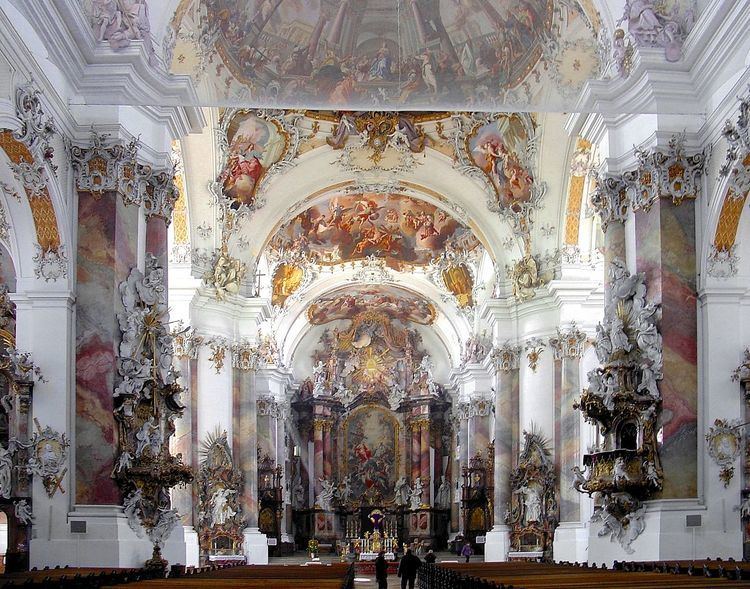Name Johann Feuchtmayer | ||
 | ||
Died June 4, 1772, Augsburg, Germany | ||
Johann Michael Feuchtmayer (the Younger) (sometimes spelled Johann Michael Feuchtmayr or Feichtmayr) (1709 – June 4, 1772) was a German Baroque stucco sculptor and plasterer of the Wessobrunner School, who worked alongside Johann Michael Fischer, Johann Joseph Christian, and Franz Joseph Spiegler to create some of the most famous churches along the Upper Swabian Baroque Route.
Contents
J. M. Feuchtmayer is considered to be one of the finest artists of his time. His work on the Ottobeuren Abbey, one of the most magnificent churches of the Baroque era, was especially important. The stucco that dominates the design is his.
Feuchtmayer was born in Wessobrunn, Bavaria. A member of the famous Feuchtmayer family, he was the son of Michael Feuchtmayer (b. 1667); the nephew of Franz Joseph Feuchtmayer (1660–1718) and Johann Michael Feuchtmayer (the Elder) (1666–1713); the brother of Franz Xaver Feuchtmayer (the Elder) (1705–1764); the cousin of Joseph Anton Feuchtmayer (1696–1770); and the uncle of Franz Xaver Feuchtmayer (the Younger) (b. 1735).
